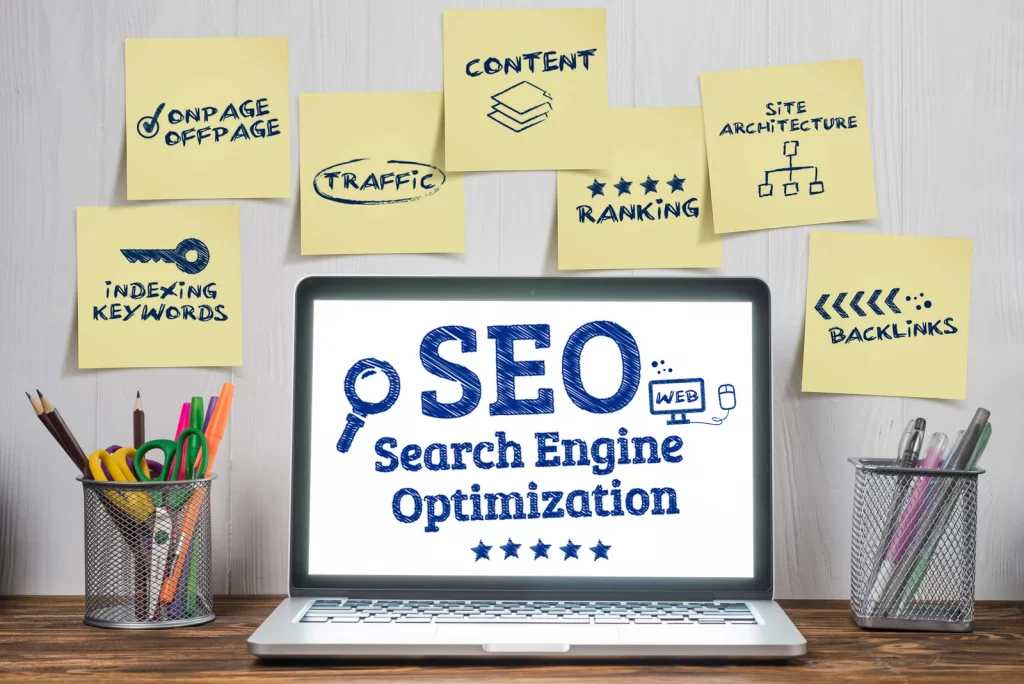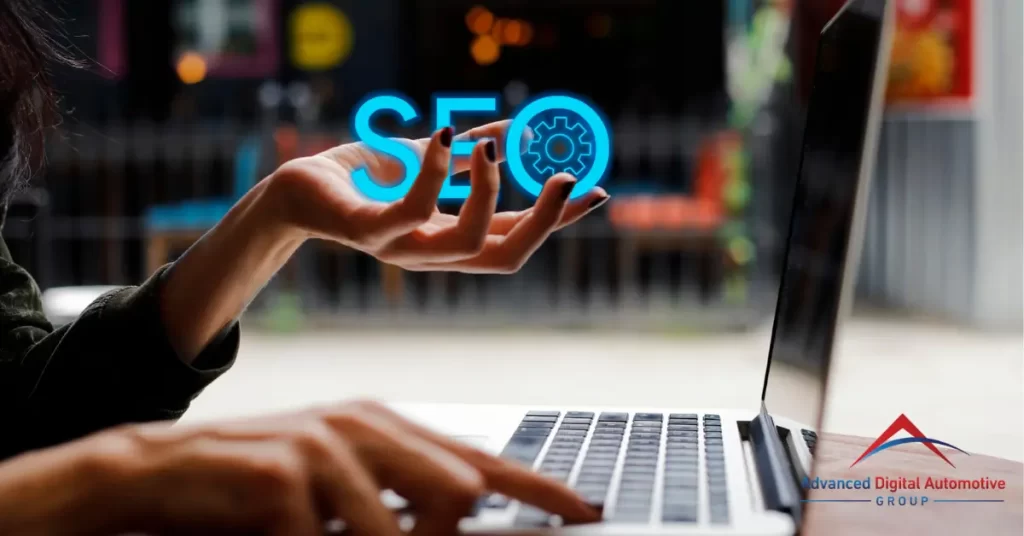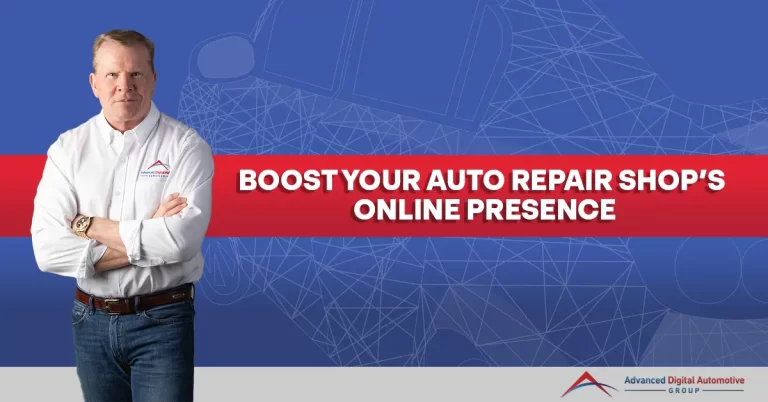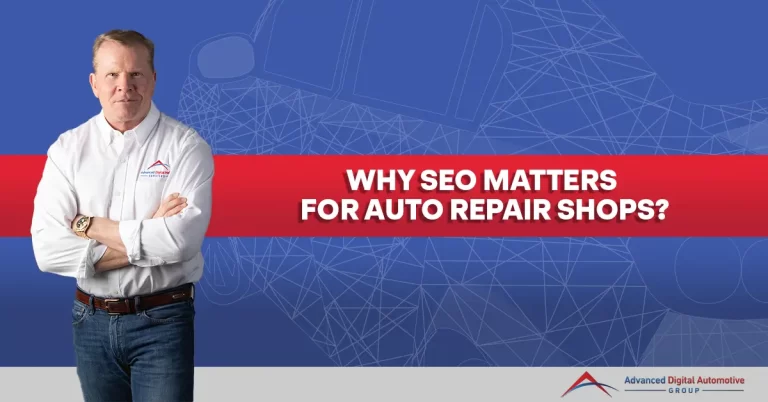User intent SEO refers to understanding the purpose behind a user’s search query and delivering relevant content that meets their needs. In this blog, we explore the significance of user intent in the context of the RV industry and how it can be leveraged to drive organic traffic for your business.
As an RV enthusiast, you may have spent countless hours exploring the open road, seeking adventure in every corner of the country. But when you’re not living your nomadic dream, you’re probably searching the web for the best RV maintenance tips, the top camping destinations, or maybe even a new addition to your mobile home on wheels.
Now, have you ever wondered how, with just a few clicks, the search engine magically presents you with a list of websites that seem to understand your specific needs as an RV owner? It’s like they can read your mind! Well, the secret behind this search engine sorcery lies in something called user intent.
What is user intent in SEO?
User intent SEO refers to tailoring your website content to align with users’ specific goals and expectations in search engine results pages (SERPs). Understanding user intent helps search engines deliver the most relevant results to users, and for website owners, it enables them to create content that satisfies their target audience’s needs.
What are the types of user intent?

Every search query reflects a user’s intent, the ultimate goal they want to achieve. Search queries can be categorized into four primary types of user intent:
1. Informational intent
This is when a user seeks specific information, such as “how to change a tire.” Website owners can target informational user intent SEO by creating blog posts, how-to guides, and informative content.
2. Navigational intent
Users with navigational intent are looking for a particular website or online resource, like “Advanced Digital Automotive Group.” Optimizing for navigational user intent SEO ensures easy website navigation and clear branding.
3. Transactional intent
This type of intent is common among users ready to purchase or complete a specific action, such as “buy car oil online.” Website owners can create product pages, service descriptions, and clear calls-to-action (CTAs) to target transactional user intent SEO.
4. Commercial intent
Users with commercial intent are in the research phase and are looking for product comparisons, reviews, and other information to help them make a buying decision. Website owners can optimize for commercial user intent SEO by creating buying guides, comparison articles, and persuasive content.
What is the importance of user intent in SEO?
Understanding user intent SEO is like having a compass in the vast online landscape. It gives you a clear direction on what content to create and how to optimize it, leading to several benefits:

1. Enhanced visibility in search results
When your content aligns with the user’s search intent, search engines recognize its relevance, increasing the likelihood of higher rankings. This means more visibility and organic traffic for your website.
For instance, if a user searches for “best RV camping spots,” search engines prioritize websites that have optimized their content to provide recommendations and guides for RV enthusiasts.
2. Better understanding of your target audience
Integrating user intent in SEO requires a deep understanding of your target audience’s preferences and pain points. The process involves getting into the minds of your potential customers, knowing what they want and how they want it.
What is user intent in SEO? For RV shop owners, this means understanding the specific needs and desires of RV owners, such as information on RV maintenance, accessories, and campground recommendations. Addressing these needs through your content can attract more targeted traffic and build a loyal customer base.
3. Increased engagement and reduced bounce rates
When your content meets users’ expectations, they are more likely to engage with it by spending more time on your website, exploring other pages, and sharing the content with others. This engagement sends positive signals to search engines, indicating your content is valuable and relevant.
On the other hand, if your content doesn’t align with the user intent SEO, they are likely to leave your site quickly, resulting in a high bounce rate. Search engines interpret this as a signal that your content may not be helpful, leading to lower rankings.
4. Competitive edge in the SERPs
Optimizing for user intent SEO can give you a competitive advantage. While some website owners focus solely on keywords, those who understand and address user intent are more likely to attract quality traffic by providing the desired information or solutions.
For example, if you own an RV shop and create content that targets SEO user intent by providing in-depth guides on RV maintenance and repair, you are more likely to rank higher than competitors who only have generic content.
5. Increased conversion opportunities
User intent SEO is not just about driving traffic to your site; it’s also about attracting the right traffic – those who are most likely to take the desired action. When your content aligns with the user’s intent, you create a seamless pathway for them to move forward in their customer journey.
For RV shop owners, this could mean creating content that targets transactional user intent in SEO, such as “buy RV parts online” or “schedule an RV repair,” as this will attract users ready to purchase or book a service.
How did user intent change the SEO landscape?

Meeting SEO user intent has always been the ultimate goal of search engines. Search engines have become smarter in understanding user intent in recent years, shifting from traditional keyword matching to semantic search.
Semantic search focuses on the meaning behind the search query, considering context, synonyms, and natural language. This development has led to significant changes in the SEO landscape:
1. Shift from keywords to topics
In the past, SEO was heavily focused on keyword optimization. However, with the emphasis now on user intent SEO, the focus has shifted to creating comprehensive and authoritative content that covers the entire topic.
Search engines are now better able to interpret the relevance of content beyond exact keyword matches. They can identify related terms and concepts, rewarding websites with in-depth topic coverage. If you own an RV business, you can benefit from this by creating content that addresses different aspects of RVing, such as travel tips, campground reviews, and maintenance guides.
2. Enhanced search experience
The growing emphasis on user intent SEO has enhanced the search experience. Search engines strive to deliver more accurate and personalized results that align with the user’s specific needs.
What is user intent in SEO? For RV businesses, this means that by understanding and catering to the unique intent of your target audience, you can attract more qualified traffic to your website. The ultimate goal is to provide a seamless user experience where visitors can easily find the information or resources they seek.
3. Rise of voice and mobile search
The increasing use of voice search and mobile devices can be attributed to the growing focus on user intent SEO. When people use voice search, they tend to use more conversational and longer search queries.
These queries are often driven by specific SEO user intent, such as finding immediate solutions or local recommendations. As an RV business, optimizing your website for voice search and mobile devices can increase your visibility and attract users looking for quick and relevant information while on the go.
4. Diverse search engine results
Search engine results are becoming more diverse, with different types of content appearing for various search queries. The search results can include featured snippets, videos, images, and other rich media, depending on the user intent.
For RV businesses, this presents an opportunity to stand out in the search results by creating different types of content that align with the SEO user intent. For example, if the intent is to find the best RV for a particular budget, creating a comparison article or video can increase the chances of attracting organic traffic.
How do you determine user intent?
Understanding user intent in SEO is crucial for optimizing your website and delivering relevant content to your audience. Here’s how you can determine user intent:
1. Keyword research
Keywords hold the key to unlocking user intent SEO. By analyzing the keywords RV owners use, you can gain insights into their intent. For example, someone searching for “best RV for family camping” is likely in the information-gathering phase, while someone looking for “RV dealership near me” is ready for action. Leverage keyword research tools to identify and prioritize keywords that align with the SEO user intent you want to target.
2. SERP analysis
The search engine results page (SERP) is a goldmine of user intent SEO insights. Examine the top-ranking pages for your target keywords. Are they blog posts, product pages, or something else? The type of content that ranks highly gives you a clue about the intent prevalent in the search results. For instance, if the top results are all blog posts, it indicates that searchers are looking for information. This analysis will help you align your content with user intent in SEO.
3. Content mapping
Matching user intent with the right content is a recipe for SEO success. Evaluate your content and identify gaps in addressing the various SEO user intents. Create a content map that outlines the topics and formats you need to cover to meet the diverse needs of RV owners. This strategic approach will improve your chances of ranking well and enhance your site’s overall user experience.
4. Searcher demographics
Demographics play a crucial role in shaping user intent SEO. Different RV owners, such as families, retirees, or adventure enthusiasts, may have unique preferences and objectives. Understanding your target audience’s demographics can give you a deeper understanding of their intent and help you tailor your content to resonate with their needs.
5. Integrate interactive elements
Interactive elements, such as quizzes, calculators, and interactive maps, can work wonders in capturing and holding the attention of RV owners. These elements enhance the user experience and provide valuable data about the searcher’s intent.
For example, someone taking a quiz titled “Which RV is Perfect for Your Travel Style?” is likely in the information-seeking phase, while someone using an interactive map to find nearby RV campgrounds is ready to make concrete plans. By strategically placing interactive elements on your website, you can better understand user intent SEO and deliver personalized content.
How can you tailor content to meet the needs of RV owners?

Now that we’ve covered the importance of user intent in SEO and more, let’s dive into some strategies for tailoring content to meet the needs of RV owners specifically:
1. Conduct thorough keyword research
SEO user intent is the foundation of keyword research. To effectively target RV owners, you must identify keywords reflecting their search intent. These can include terms like “RV repair,” “campground reviews,” “RV accessories,” and “best RV maintenance tips.”
When conducting keyword research, consider the different types of user intent, as this will help you identify the specific keywords that align with the intent you want to target. For example, if you’re creating a blog post about RV maintenance tips, targeting keywords like “how to maintain an RV” and “RV maintenance checklist” can capture users’ attention with informational intent.
2. Create different types of content
To cater to the diverse needs of RV owners, you should develop various types of content, including:
- Service Pages: These are essential for RV shop owners who want to attract customers looking for specific services, such as “RV roof repair” or “engine maintenance.” Optimize these pages for transactional SEO user intent with clear CTAs.
- Blog Posts and Guides: Educational content remains vital for attracting users with informational intent. Consider creating blog posts and comprehensive guides on topics like “RV buying tips,” “best RV gadgets,” and “camping destination reviews.”
- Video Content: Many RV enthusiasts enjoy consuming video content. Consider creating RV tour videos, maintenance tutorial videos, and campground review videos to appeal to users who prefer this type of content.
- Interactive Content: To stand out from your competitors, consider creating interactive content, such as quizzes or checklists, that can help RV owners plan their trips or assess their maintenance needs.
3. Optimize for local SEO
Most RV owners search for services and resources in specific locations. You need to optimize your website for local SEO user intent to attract these users. Here are some essential strategies:
- Claim Your Google My Business (GMB) Listing: This is crucial for appearing in local search results. Ensure your GMB profile has accurate contact information, business hours, and customer reviews.
- Create Location-Specific Landing Pages: If your RV shop has multiple locations, create dedicated landing pages for each one. Optimize these pages with location-specific keywords and relevant information.
- Generate Online Reviews: Positive reviews can significantly impact a user’s decision when searching for RV services. Encourage satisfied customers to leave reviews on platforms like Google, Yelp, and TripAdvisor.
4. Focus on visual appeal and easy navigation
When creating content for RV owners, remember that they often seek adventure, and a visually appealing website can capture their attention. Additionally, include clear and easy navigation options to help them quickly find the information they need. This can enhance their user experience and increase their chances of staying on your site longer, reducing bounce rates, and improving your SEO user intent performance.
5. Optimize for mobile
In today’s digital era, many RV owners use their smartphones and tablets to search for information on the go. Therefore, ensuring your website is mobile-friendly and responsive is crucial. Mobile optimization is essential for providing a seamless user experience and ranking factor for search engines.
The Bottom Line
In the world of SEO, understanding and catering to user intent is crucial. To optimize for user intent effectively, conduct thorough keyword research to identify the different types of user intent associated with your target keywords. Then, create and optimize your content to align with the specific user intent behind each keyword, whether informational, navigational, commercial, or transactional.
Remember, search engines constantly evolve to better understand and satisfy user intent. So, staying updated with the latest SEO trends and best practices is essential for ongoing success in the digital landscape.
Need help with your SEO content?
Creating content tailored to your target audience’s needs is crucial for a successful SEO strategy. If you’re an RV shop owner looking to attract more customers, our team of skilled writers at Advanced Digital Automotive Group can help! We specialize in crafting engaging content that ranks well in search engine results.
Ready to take your SEO to the next level? Let’s chat! Contact us today for expert content writing for RV shop services.




